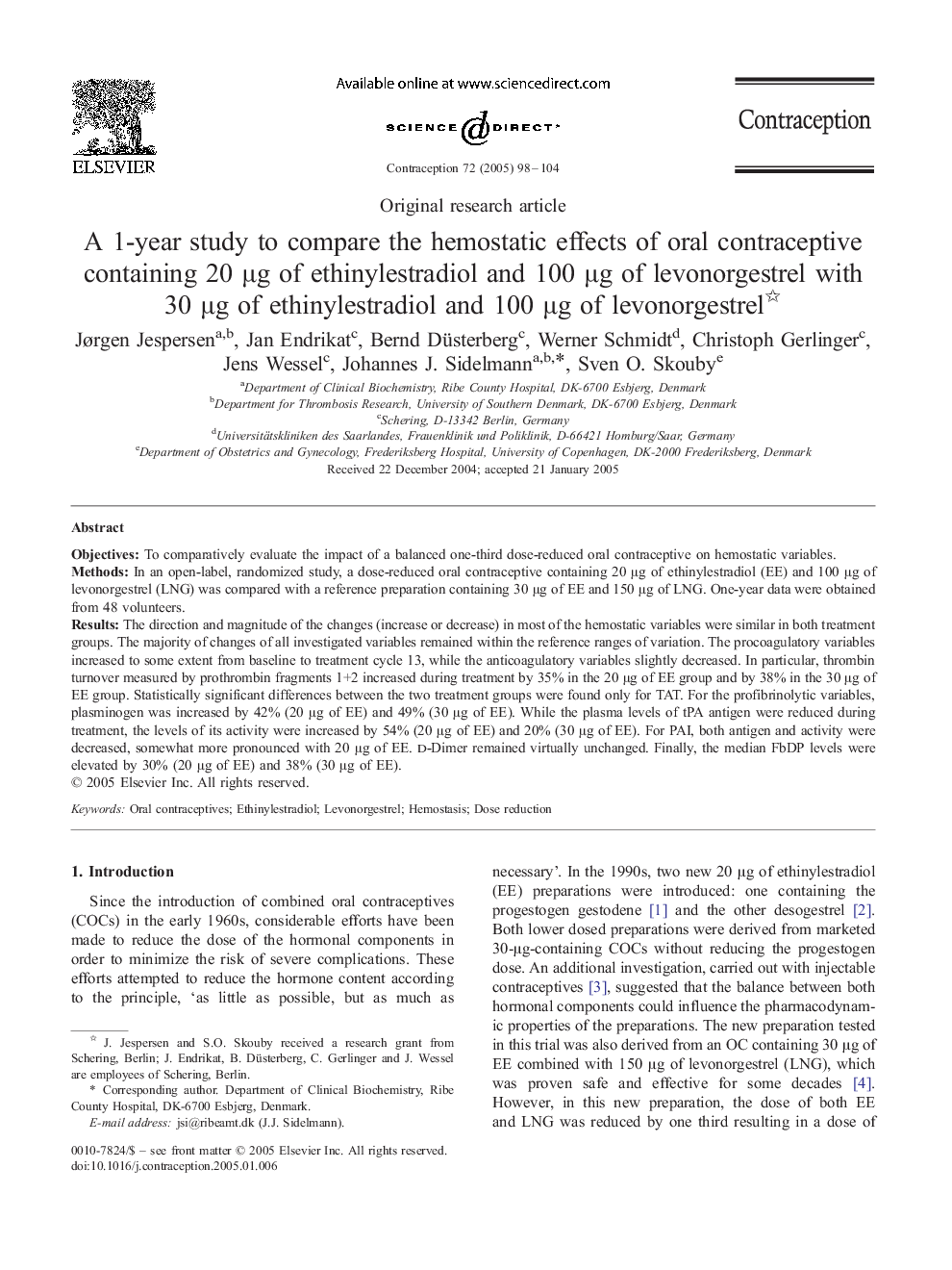| Article ID | Journal | Published Year | Pages | File Type |
|---|---|---|---|---|
| 9317197 | Contraception | 2005 | 7 Pages |
Abstract
The direction and magnitude of the changes (increase or decrease) in most of the hemostatic variables were similar in both treatment groups. The majority of changes of all investigated variables remained within the reference ranges of variation. The procoagulatory variables increased to some extent from baseline to treatment cycle 13, while the anticoagulatory variables slightly decreased. In particular, thrombin turnover measured by prothrombin fragments 1+2 increased during treatment by 35% in the 20 μg of EE group and by 38% in the 30 μg of EE group. Statistically significant differences between the two treatment groups were found only for TAT. For the profibrinolytic variables, plasminogen was increased by 42% (20 μg of EE) and 49% (30 μg of EE). While the plasma levels of tPA antigen were reduced during treatment, the levels of its activity were increased by 54% (20 μg of EE) and 20% (30 μg of EE). For PAI, both antigen and activity were decreased, somewhat more pronounced with 20 μg of EE. d-Dimer remained virtually unchanged. Finally, the median FbDP levels were elevated by 30% (20 μg of EE) and 38% (30 μg of EE).
Related Topics
Health Sciences
Medicine and Dentistry
Obstetrics, Gynecology and Women's Health
Authors
Jørgen Jespersen, Jan Endrikat, Bernd Düsterberg, Werner Schmidt, Christoph Gerlinger, Jens Wessel, Johannes J. Sidelmann, Sven O. Skouby,
